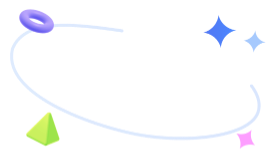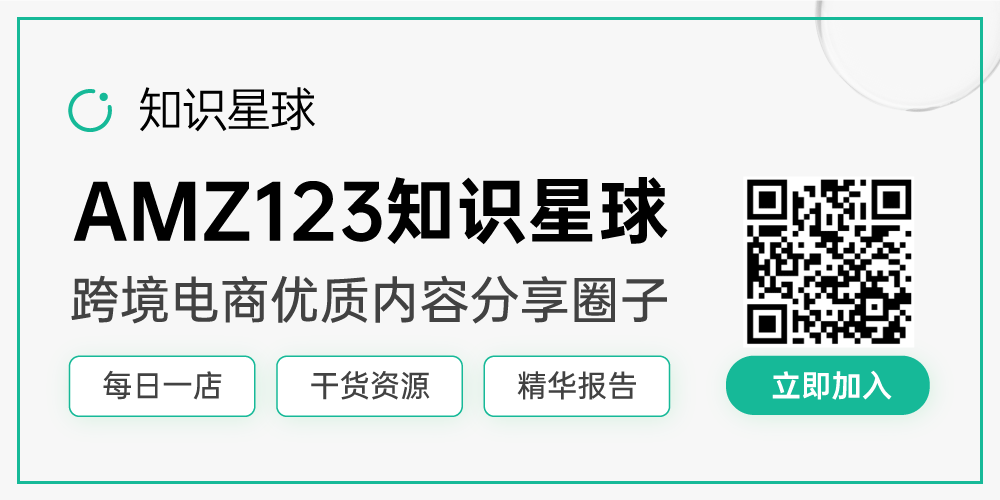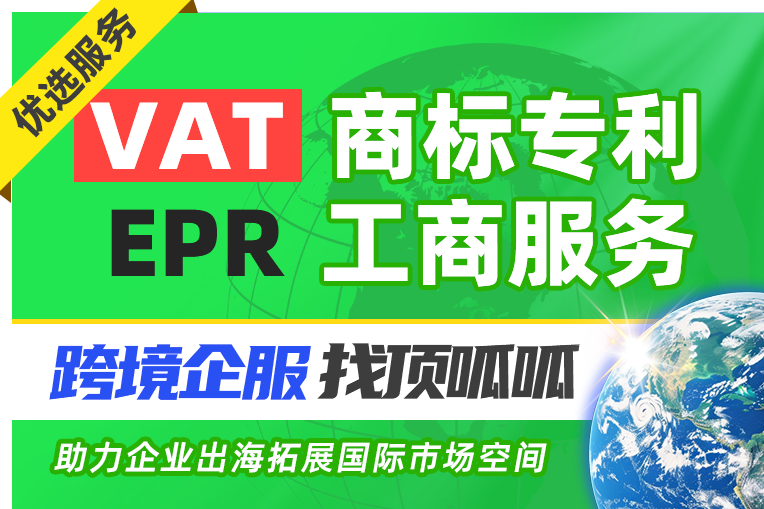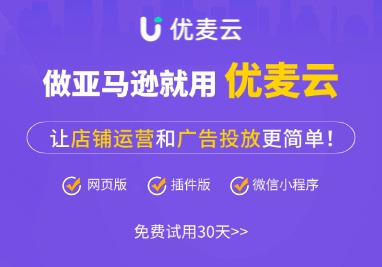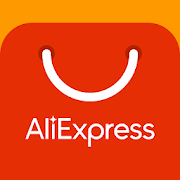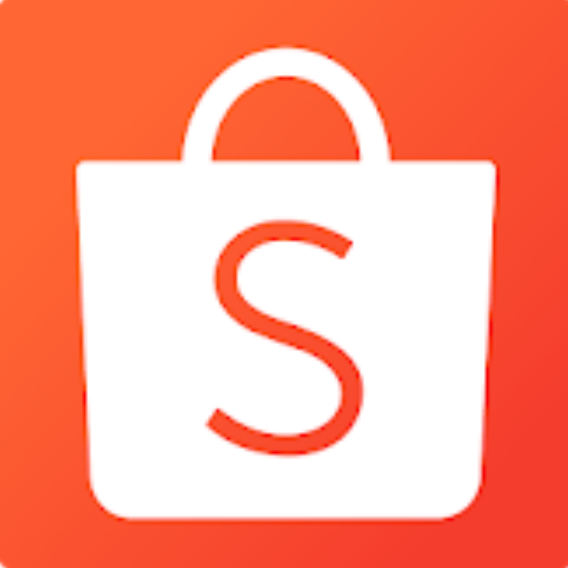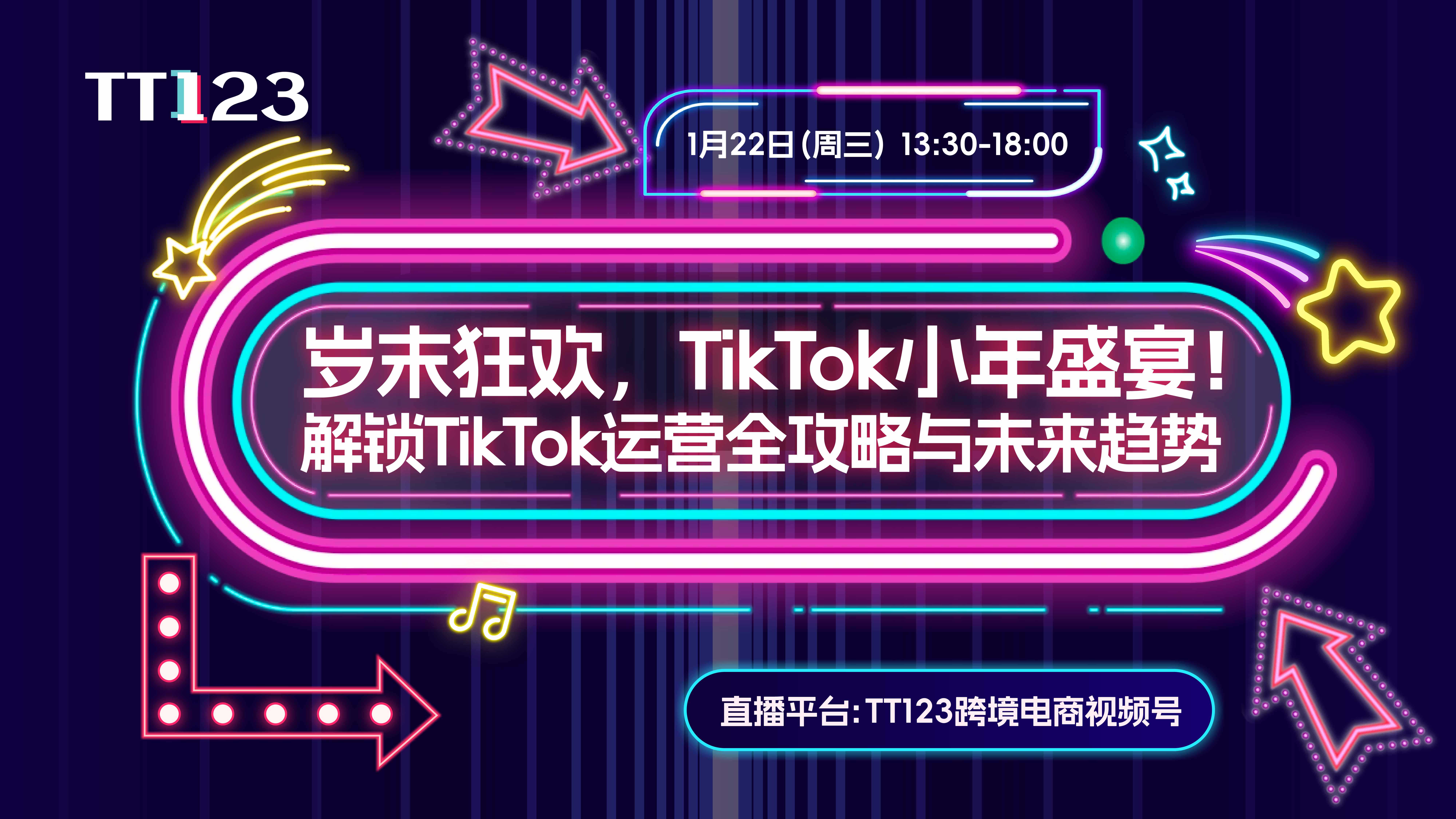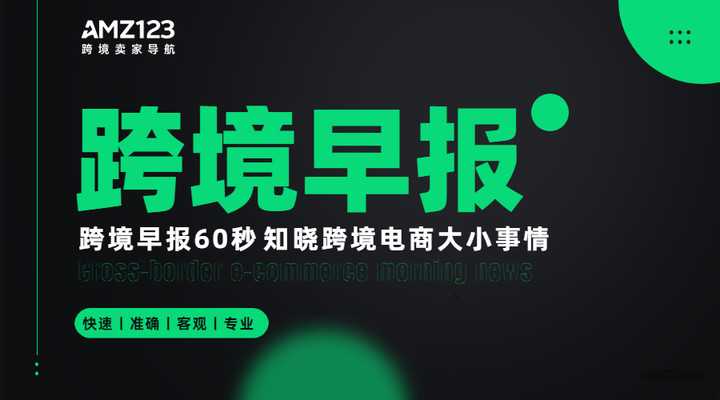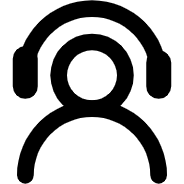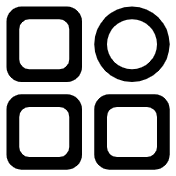一位本土卖家的分享:亚马逊产品合理定价三部曲
格蕾丝来找我要一些建议。
最近,她决定在亚马逊推出一款新产品,对此她非常激动。 这也是她的第一款产品。
她花了很多时间查看亚马逊的产品类别,也通过谷歌Trend和其他营销报告进行了一些研究。 最终,她确定了自己要投放的产品——厨房清洁剂。
这个产品有巨大的市场潜力,而且似乎有足够的空间来拓展她的产品线。 她对产品的想法包含了成功推出一款产品的所有要素。
但现在,想法就要变成现实了。 她已经可以开始订购并将产品运送到亚马逊FBA了,但她还想解决一个困惑点。
她想确定产品的售价。
此前,她从两方面都听到过成功的故事。 一些卖家因为其售价低而获得了更高的销量。 而另外一些卖家表示他们的秘诀是产品售价高。 但她不确定自己是否应该借鉴他们的办法,因为自己获得的信息量让她非常困惑。
所以她问了我这个问题,“产品合理定价的基础是什么?”
有人曾经写过关于产品定价的一整套书,所以这并不是一个容易的问题。 但是我知道格蕾丝想要一个简单的答案。
所以,我给她的建议是任何一个亚马逊新手我都会给到的建议——我的亚马逊产品合理定价三部曲。
这也是每个品牌都想确定的点,也是为什么这么多人都在不断测试自己的产品定价,将其提高5%或降低10%,或者将价格尾数定为.97而不是.99。 每个品牌都想在“过高”和“过低”中间找到“平衡点”。 而亚马逊卖家也是如此。
因此,无论你准备投放第一款产品,或是一年以后,打算推出第三款产品,你都需要认真考虑以下步骤,来评估自己的定价。 这三点总是能够让你重新找到自己的合理定价。
第一步:研究你的竞争对手
格蕾丝准备确定其产品售价时,她还得看看竞争对手的定价。 这样有助于她确定其产品在市场上的价格合理性范围。
价格合理性是指产品可接受的价格范围。 例如,如果你决定售卖自己品牌的速热米饭,你会发现一般的合理价格范围在1.19美元到3.5美元之间。 如果你将自己的价格定为16美元/盒,那你就有麻烦了(除非你的米饭具有永久的保质期)。
因此,格蕾丝研究了她排名前五的竞争对手,并且记下了他们对8盎司的瓶装除垢剂的定价。 其价格是:
|
Brand |
Price |
|
Kitchen CleanUp |
7.25 |
|
Handyman |
6.25 |
|
Clean Queen |
8.19 |
|
Grease Mover |
8.75 |
|
Grease B Gone |
8.50 |
所以,通过查看表中的主要指标,格蕾丝可以确定她的定价范围应在2.75到4.5美元之间。这并不是说她的售价不能超出这个范围,但她有更好的理由将售价控制在这个范围之间。
迄今为止,格蕾丝了解的只是合理的定价范围,但现在她要做什么呢? 试着将售价定为高于或低于其对手的价格吗?
为了做出明智的决定,格蕾丝需要完成第二步和第三步。 但是在继续之前,让我给出关于第一步的警告。
定价低于竞争对手可能非常具有吸引力。 看着对手的售价,或许格雷斯会把她的清洁剂定为2美元。 她可以投放一个广告,将对手的产品和自己的产品罗列出来,请客户自己进行“比较和决定”。 客户会因为更低的价格而动摇吗?
不一定。 实际上,研究发现,降低产品定价可能会对产品造成两点不利影响。
第一,降低产品定价可能降低其感知价值。 对于重要产品,你就很容易想到这一点。 如果你想买咳嗽药,你会购买价格比其他品牌低5美元的药吗? 应该不会吧。 当一个没有知名度的品牌想要以较低的价格进入市场时,人们自然会起疑。
第二,研究还表明,当某些品牌要求客户比较价格时,结果通常不会很理想。 由于某些原因,客户会认为他们受到了某种错误操纵。 然而,在没有任何事先建议的情况下,当客户自己想要进行比较时,他们通常会选择价值量更高的产品。
当然,定价高于你的竞争对手也可能是一种诱惑。 但是,只有当你的产品具有显著的不同,能够支撑起这个价格时,实现更高的定价才有可能。 如果没有强大的客户基础,你需要给潜在的买家一个理由,才能说服他们为你的产品花更多的钱。
第二步:研究你的COGS(销售成本)
既然你已经了解了自己的价格范围,现在是时候看看你能否通过采购贴有自己标签的产品来获取利润了。 你要联系自己的产品供应商,并对你感兴趣的产品进行估算,只有这样你才能开始确定自己产品的实际价格。
销售成本是指产品的制造成本。 例如,如果你采购梳子,你会想要知道每个梳子的成本,包括原材料和加工费。 通常来说,制造商会在估算过程中给你提供这个信息。
所以,如果格蕾丝要估计自己的厨房清洁剂的成分,她要知道自己每一瓶的COGS。 我们假设她联系到的制造商给了她以下估计数据:
|
Natural Chemicals, Inc. |
$0.50 p/16 oz bottle |
|
Timber Laboratories |
$0.55 p/16 oz. bottle |
|
Brickman Chem Co. |
$0.46 p/16 oz. bottle |
|
We Do Acid Laboratories |
$0.52 p/16 oz. bottle |
如果格蕾丝决定以最低估计价格($ 0.46)购进,并以7美元的价格售出,那么她每瓶的预计盈利约为6.54美元。 太棒了! 但这个数据准确吗?
并不那么准确。
即使格蕾丝知道自己的COGS,她也需要考虑不与供应商直接相关的其他费用和开销。 这可能包括设计和生产瓶子标签的成本,亚马逊对每件产品收取的服务费,以及与该产品相关的广告或赠品成本。 一旦将这些费用考虑在内,格蕾丝要确定她7美元的定价是否可行。
所以格蕾丝重新制作了下面的表格:
|
MFG costs (COGS) |
Labels |
Amazon Fees |
Price |
|
$0.46 p/bottle $460 for 1,000 bottles |
$0.35 p/bottle $500 for 1,000 bottles |
$4.59 total ($1.05 fee, $1 order handling, $1.04 pick and pack fee, $1.50 weight handling fee) |
$7 p/bottle |
请注意,格蕾丝最初的COGS是重要的,但它没有清晰地给出利润率。 现在,所有费用都包括在内了,她每瓶的总成本是5.40美元,使得其总利润只有1.60美元。现在格蕾丝可以调整她的定价以提高其利润率了。 在这一点上,格雷斯7美元的售价似乎不足以达到理想的利润率。
当然,这个利润率也可以通过购进更多的产品和降低供应商的单件成本来实现。 那么,如果格蕾丝能够大幅度提高其销量,她就能赚取足够的利润以持续发展其亚马逊业务了。
定价之前一定,一定,一定要确定你的COGS和利润率。
第三步:研究你的客户
亚马逊卖家经常忽视的一个重要因素就是他们的典型客户群体。 当然,刚开始的时候,你还不知道自己的客户群体是哪些,但你可以想象你期望其购买你产品的那些人。
问题在于,新的卖家经常会将售价定为远高于竞争对手和自己利润率的价格,完全忘了问自己这个问题:“客户会为我的产品支付这么多钱吗?”
请记住,你要避免定价的两个极端。 你不希望人们来找你只是为了讨价还价吧。 这不是一个长期的销售策略。 如果客户看到你的产品具有高价值量还行,但你一定不想成为知名的亚马逊跳蚤市场。
但同样,以高价格进入亚马逊市场也是很难的。 如前所述,如果一个新的产品要以昂贵的售价进入亚马逊市场,它最好与竞争对手具有价值意义上的区别或明显的不同。 想想客户是否为了购买高档产品而来亚马逊也很重要。 从你的产品利基来看,这或许也不大可能。
回到格蕾丝的情况,她设想自己产品的主要购买群体是厨房里的妈妈们,而不是商业厨房中的工人。 她知道妈妈们经常寻找打折商品,而不是高价位的产品。 除此之外,家用厨房清洁剂不一定属于高端产品类别。
所以可能格蕾丝不能将其产品定价为每瓶10美元,除非她的清洁剂与其竞争对手相比有明显的优势。 她不仅要问自己能够从厨房清洁剂中赚取多少利润,还要问妈妈们愿意为厨房清洁剂支付多少钱?
从一开始,你就需要考虑两个相同的因素:你产品市场中的客户是否愿意支付你的售价,寻找你的产品的顾客是否愿意支付你的售价? 不要害怕测试不同的价点,这样可以用真实数据回答这些问题。
另外的定价方法
价格锚定
价格锚定是指将你的价格与另一个更高的价格放在一起,使客户觉得你的价格十分划算。 购物的时候,你总是可以看到这样的场景,即使你对产品并不熟悉。
每次你看到电视购物广告,发言人总是会从一个问题开始:“对于这样的产品,你期望的价格是多少呢?100美元? 200美元?”这些价格其实是心理暗示,就好像在说:“这款产品的售价应该是200美元”
但是接着播音员就会说:“但这个产品的实际价格只有59.99美元。”而相对于200美元,59.99美元听起来就像是偷来的那样划算。 播音员甚至会将实际价格作为另一个锚点,说道 “但是如果30分钟内拨打电话,只要29.99美元,你就能得到这款产品。”说实话,这款产品的实际价值可能只有12.99美元,但是首先锚定更高的价格,29.99美元就很便宜了。
在亚马逊上,通过在Amazon产品listing的后台设置高于你的实际售价的价格,经常发生价格锚定。

但是,当你宣传自己的价格时,尽量把它放在更高的价格旁边。
数字9的魔力
有证据表明,以数字9结尾的价格通常能创造出比以随机数字结尾的价格更高的业绩。 有足够的研究证明尾数9的魔力,这些价格被称为“魅力价格”,所以格雷斯或许会将其价格设定为6.99美元或7.49美元。
然而,Derek Halpern在Social Triggers上争论道,没有任何研究能够证明数字9在线上销售的作用。 你自己决定是否要进行尝试。
提供中间选项
虽然这可能不适用于那些刚开始在亚马逊销售的卖家,但随着业务的继续拓展,提供中间选项可能会派上用场。
研究表明,提供两种产品选择的品牌,可以通过创建中间选项来增加其售价更高的产品的销量。 让我通过格蕾丝的相关例证来进行解释。
我们假设,格蕾丝最终扩大了其产品选择,不仅提供了16盎司瓶装,售价为7美元,而且还提供了8盎司瓶装,售价为3.75美元。 如果研究是正确的,格蕾丝可以引进一个10盎司瓶装的中间选项,售价为6.50美元,客户会更倾向于价格较高的16盎司瓶装。
最初产品选项
|
8 oz. bottle |
$3.75 |
|
16 oz. bottle |
$7.00 |
插入中间选项
|
8 oz. bottle |
$3.75 |
|
10 oz. bottle |
$6.50 |
|
16 oz. bottle |
$7.00 |
当然,很少有顾客会购买10盎司瓶装,因为它的价格过高,但把它放在那里,暗示16盎司瓶装是非常划算的。 最后,这是价格锚定更微妙的一种形式。
结语
通过将你的竞争对手,销售成本以及客户群体纳入考虑范围,你会对亚马逊产品定价做出更明智的决定。
但是,一旦你考虑到了这些,就不要犹豫,尝试不同的定价。 或许格雷斯可以在两周或三周之内,将价格定为7美元,然后在另外三个周,将价格改为6.99美元。 她可能会发现一分钱的差异能使客户更乐意购买其产品,从而增加了销量。
最后,你可以做出产品定价的最终决定了。 所以,从这三个方面进行全面考虑,然后做出明智的决定。
本文来自国外网址:
https://www.salesbacker.com/blog/108/Follow_These_Three_Steps_to_Determine_Your_Amazon_Product_Pricing_Sweet_Spot
附原文
Follow These Three Steps to DetermineYour Amazon Product Pricing Sweet Spot
Grace came to mefor some advice.
She wasextremely excited about her recent decision to launch a new product on Amazon.It was her first one.
She’d taken hertime and looked through several Amazon categories. She had done some researchthrough Google Trends and other marketing reports. And she had finally naileddown the niche she was going to conquer - kitchen cleaners.
It had a load ofpotential and appeared to have enough room to expand her product line as well.Her product idea had all the makings for a great product launch.
But now, it wasbecoming real. She was actually on the edge of pulling the trigger on orderingand having the product shipped to Amazon FBA. She just wanted to get one morepiece of the puzzle in place.
She was tryingto determine her pricing.
She had heardsuccess stories from both sides of the spectrum. Some sellers were selling morebecause they priced low. Other sellers claimed their secret was to price high.But she wasn’t sure she should cut and paste their solutions onto her ownproduct. The amount of information was confusing.
So she asked methe question, “What are the basics of finding the right price for my product?”
Now there arepeople who have written entire books on pricing, so it’s not an easy question.But I could tell Grace wanted a simple answer.
So I gave herwhat I’d give anyone who’s just starting out in their first Amazon business -my three step process to determine your pricing sweet spot.
That’s whatevery brand is attempting to find which is why so many are constantly testingtheir product pricing by raising it 5% or lowering it 10% or ending it in .97instead of .99. Every brand is trying to find the “sweet spot” right in themiddle of “too high” and “too low”. Amazon sellers are no different.
So whether you’re just launching product #1 or one year into product #3, you’llwant to think through the following steps to evaluate your pricing. These threesimple points will always bring you back to center on where your pricing sweetspot actually should be.
STEP ONE: STUDY YOUR COMPETITION
As Grace isgetting ready to determine her pricing, she has to look at the pricing of hercompetitors. This will help her determine the range of price legitimacy herproduct has in the market.
Price legitimacyrefers to the price range acceptable for the product. For example, if youdecided to sell your own brand of minute rice, you’d find that the generallegitimacy range is between $1.19 and $3.50. If you decided to sell your brandfor $16 p/box, you’d have a problem (unless your rice grantedimmortality).
So Graceresearched her top five competitors and logged their own pricing for an 8 ouncebottle of degreaser. Their prices were:
|
Brand |
Price |
|
Kitchen CleanUp |
7.25 |
|
Handyman |
6.25 |
|
Clean Queen |
8.19 |
|
Grease Mover |
8.75 |
|
Grease B Gone |
8.50 |
So by looking atthe major players in her category, Grace can determine that a general range forher pricing should be between $2.75 and $4.50. It doesn’t mean she can’t go higher or lower in pricing, but it meansshe better have a good reason for doing so.
All Grace has sofar is a legitimate pricing range, but now what does she do? Does she try toprice in the higher or lower range of her competitors?
In order to makean informed decision, Grace needs to complete step two and three. But before wemove on, let me point out a warning associated with step one.
It might betempting to think about pricing lower than your competitors. Perhaps Gracelooks at her competitor’s pricing and decides she’ll price her cleaner at $2.She could run an advertisement which lined up her product with their productsand ask customers to “compare and save”. Wouldn’t customers be swayed by lowerpricing?
Not necessarily.Actually, studies have found that pricing your product lower can have twonegative influences on your product.
First, pricingyour product lower can give it a lower perceived value. You can imagine thiseasily with important items. If you are shopping for a cough medicine forcongestion issues, would you buy a brand that is $5 below the cost of everyother brand? Probably not. When a brand without name recognition tries to enterthe market at a lower cost, people are naturally suspicious.
Secondly, studies have alsoshown that when brands ask customers to compare prices, the results arenegative. For some reason, customers assume they are being somehow falselymanipulated. However, when customers are allowed to make comparisons on theirown without any prior suggestions, customers will typically choose the bettervalue.
Of course,pricing higher than your competitors may also be a temptation. However, ahigher price can only be possible if you have a strong differentiation thatjustifies the price. Without a strong customer base, you will need to persuadepotential buyers to see a reason to pay more.
STEP TWO: STUDY YOUR COGS (Cost of GoodsSold)
Now that youhave an idea of the price range available to you, it’s time to see if you canmake a profit by sourcing your own private label product. You’ll need tobegin contacting suppliers in your niche and getting estimates on the productyou’re interested in. Only then can you begin making decisions about youractual price.
The Cost ofGoods Sold refers to the manufacturing cost of your product. So for example, ifyou were sourcing hair brushes, you’d want to know how much each hair brushwould cost including both materials and labor. Usually, the manufacturer willgive you this information during the estimate.
So if Grace wereto get estimates on her own formulaa of kitchen cleaner, she’d want to know herCOGS p/bottle. Let’s suppose the manufacturer's she contacted gave her thefollowing estimates:
|
Natural Chemicals, Inc. |
$0.50 p/16 oz bottle |
|
Timber Laboratories |
$0.55 p/16 oz. bottle |
|
Brickman Chem Co. |
$0.46 p/16 oz. bottle |
|
We Do Acid Laboratories |
$0.52 p/16 oz. bottle |
If Grace decidesto go with the lowest estimate ($0.46) and sold her own brand for $7, she couldestimate that she would make about $6.54 per bottle. That’s remarkable! But isthat accurate?
Not necessarily.
Even thoughGrace has her COGS, she’ll need to think through other expenses and overheadnot directly related to the supplier. This might include the cost of design andproduction of labels for the bottles, the cost of Amazon’s fees per product,and possibly the cost of advertising or giveaways associated with that product.Once those fees are factored in, Grace will determine if her $7 price tag isfeasible or not.
So now Grace reworksher chart to look more like this:
|
MFG costs (COGS) |
Labels |
Amazon Fees |
Price |
|
$0.46 p/bottle $460 for 1,000 bottles |
$0.35 p/bottle $500 for 1,000 bottles |
$4.59 total ($1.05 fee, $1 order handling, $1.04 pick and pack fee, $1.50 weight handling fee) |
$7 p/bottle |
Notice howGrace’s initial COGS was important but didn’t give the best picture of herprofit margin. Now, with all fees included, her total cost per bottle is $5.40,making her total profit only $1.60. Grace can now make adjustments to herpricing to increase her profit margin. At this point, it seems Grace’s $7 pricepoint isn’t enough to hit an ideal profit margin.
Of course, thisprofit margin might be helped by buying a larger quantity and reducing the costper bottle from the supplier. Then, if Grace can increase her sales to a largenumber, she may be making enough to maintain a sustaining business on Amazon.
Always, always,always determine your COGS and profit margin before setting your price.
STEP THREE: STUDY YOUR CUSTOMER
One importantfactor often overlooked by Amazon sellers is their typical customer base. Ofcourse, when you’re just starting out, you won’t know who your customer base isyet, but you can probably imagine the kind of people you want to purchase yourproduct.
The problem isthat new sellers often begin pouring over competitors numbers and their ownprofit margin numbers and completely forget to ask the question, “But willcustomers pay that much for the product?”
Remember, you’llprobably need to avoid the two extreme ends of pricing. You don’t want peoplecoming to you simply looking for a great bargain. That won’t result in along-term sales strategy. It’s okay if customers see your product as a goodvalue, but you don’t necessarily want to be known as the flea market of Amazon.
But it might bedifficult as well to enter the Amazon market with a high-end price as well. Asmentioned before, a new product better have a very valuable and cleardifferentiation from it’s competitors if it’s going to enter Amazon wearing anexpensive price tag. It’s also important to consider whether customers come toAmazon to purchase high-end products. Depending on your product niche, this maynot be the most likely scenario.
Back to Grace.Grace envisions her own product being purchased primarily by moms in thekitchen and not by commercial kitchen workers. She knows that moms are oftenlooking for deals and not necessarily for high-priced product. Besides this,the residential kitchen cleaner niche isn’t necessarily a high-end category.
So Graceprobably can’t decide to charge $10 per bottle unless her cleaner had adistinct advantage over her competitors. She needs to not only ask how much canI make from a kitchen cleaner product but also how much will moms pay for akitchen cleaner?
Starting out,you’ll need to consider the same two factors: Are customers in your nichewilling to pay your price, and are customers looking for your product willingto pay your price? Don’t be afraid to test different price points in order toanswer those questions with real data.
Additional Pricing Methods
Price Anchoring
Price anchoringrefers to placing your price alongside another higher price point making thecustomer feel that your price is a deal. You see this all the time while youshop though you may not be familiar with the term.
Whenever you watchan infomercial, the spokesperson will always begin with a question: “What wouldyou expect to pay for a product like this? $100? $200?” Those prices are mentalsuggestions. It’s like saying, “We should really charge you $200 for thisproduct.”
But then theannouncer says, “But the actual price for the product is only $59.99.” Andcompared to $200, $59.99 sounds like a steal. The announcer may even use theactual price as another anchor. “But if you call in the next 30 minutes, youcan get the product for only $29.99.” Truth be told, the product may only beworth $12.99, but by anchoring the price to higher prices first, $29.99 is agreat deal.
On Amazon, priceanchoring will usually take place by setting the price higher than your actualsale price in the backend of your Amazon product listing.
But whenever youadvertise your price, try to anchor it next to a higher price.
The Power of 9
There is evidence thatprices ending in the number 9 usually outperform prices with alternate endings.There is enough studies verifying the power of the 9 ending that these pricesare called “charm prices”, so Grace may want to set her price at $6.99 or$7.49.
However, DerekHalpern over at Social Triggers argues that thereare no studies proving that the 9 magic works with online sales. It’ll be up toyou to decide whether you want to try it or not.
Offering a Middle Option
Though this maynot apply to those starting with their first product on Amazon, offering amiddle option may come in handy as you continue to expand your business.
Studies have shown that brands who offertwo product choices can increase the sales of the higher priced product bycreating a middle option. Let me explain by way of an illustration related toGrace.
Let’s say thatGrace eventually expands her product choices and offers not only a 16 oz.bottle for $7 but also sells an 8 oz. bottle for $3.75. If the studies arecorrect, Grace could introduce a middle option, a 10 oz. bottle for $6.50, andcustomers would gravitate toward the higher priced 16 oz. bottle.
Original Product Selection
|
8 oz. bottle |
$3.75 |
|
16 oz. bottle |
$7.00 |
Inserting a Middle Option
|
8 oz. bottle |
$3.75 |
|
10 oz. bottle |
$6.50 |
|
16 oz. bottle |
$7.00 |
Now, of course,very few customers would ever purchase the 10 oz. bottle because it’s wayoverpriced, but placing it there suggests that the 16 oz. bottle is a greatdeal. In the end, it’s a more subtle form of price anchoring.
Conclusion
By taking intoconsideration your competition, your cost of goods sold, and your customerbase, you’ll be making a much more informed decision about setting the price ofyour Amazon product.
But once you’vefactored each of these in, don’t hesitate to experiment with different pricing.Perhaps Grace could set her price point at $7 for two or three weeks, thenchange the price to $6.99 for another three weeks. She may find that the pennydifference makes customers feel slightly better about their purchase andincreases sales.
In theend, you get to make the ultimate decision about your pricepoint. So do it wisely with plenty of consideration for these three areas.



